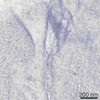+Search query
-Structure paper
| Title | Human T-lymphotropic virus-1 visualized at the virological synapse by electron tomography. |
|---|---|
| Journal, issue, pages | PLoS One, Vol. 3, Issue 5, Page e2251, Year 2008 |
| Publish date | May 28, 2008 |
 Authors Authors | Endre Majorovits / Mohamed Nejmeddine / Yuetsu Tanaka / Graham P Taylor / Stephen D Fuller / Charles R M Bangham /  |
| PubMed Abstract | Human T-lymphotropic virus 1 (HTLV-1) is transmitted directly between cells via an organized cell-cell contact called a virological synapse (VS). The VS has been studied by light microscopy, but the ...Human T-lymphotropic virus 1 (HTLV-1) is transmitted directly between cells via an organized cell-cell contact called a virological synapse (VS). The VS has been studied by light microscopy, but the ultrastructure of the VS and the nature of the transmitted viral particle have remained unknown. Cell-free enveloped virions of HTLV-1 are undetectable in the serum of individuals infected with the human T-lymphotropic virus 1 (HTLV-1) and during in vitro culture of naturally infected lymphocytes. However, the viral envelope protein is required for infectivity of HTLV-1, suggesting that complete, enveloped HTLV-1 virions are transferred across the synapse. Here, we use electron tomography combined with immunostaining of viral protein to demonstrate the presence of enveloped HTLV-1 particles within the VS formed between naturally infected lymphocytes. We show in 3D that HTLV-1 particles can be detected in multiple synaptic clefts at different locations simultaneously within the same VS. The synaptic clefts are surrounded by the tightly apposed plasma membranes of the two cells. HTLV-1 virions can contact the recipient cell membrane before detaching from the infected cell. The results show that the HTLV-1 virological synapse that forms spontaneously between lymphocytes of HTLV-1 infected individuals allows direct cell-cell transmission of the virus by triggered, directional release of enveloped HTLV-1 particles into confined intercellular spaces. |
 External links External links |  PLoS One / PLoS One /  PubMed:18509526 / PubMed:18509526 /  PubMed Central PubMed Central |
| Methods | EM (tomography) |
| Resolution | 50.0 Å |
| Structure data |  EMDB-1450:  EMDB-1451:  EMDB-1452:  EMDB-1453:  EMDB-1454: |
| Source |
|
 Movie
Movie Controller
Controller Structure viewers
Structure viewers About Yorodumi Papers
About Yorodumi Papers




 Homo sapiens (human)
Homo sapiens (human)